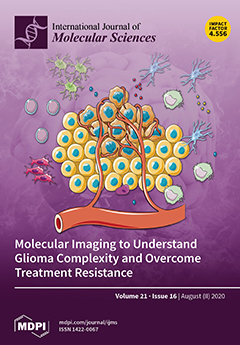Toll-like receptors (TLRs), as important pattern recognition receptors, represent a significant component of fish immune systems and play an important role in resisting the invasion of pathogenic microorganisms. The TLR5 subfamily contains two types of TLR5, the membrane form of TLR5 (TLR5M) and
[...] Read more.
Toll-like receptors (TLRs), as important pattern recognition receptors, represent a significant component of fish immune systems and play an important role in resisting the invasion of pathogenic microorganisms. The TLR5 subfamily contains two types of TLR5, the membrane form of TLR5 (TLR5M) and the soluble form of TLR5 (TLR5S), whose detailed functions have not been completely elucidated. In the present study, we first identified two genes,
TLR5M (
ToTLR5M) and
TLR5S (
ToTLR5S), from golden pompano (
Trachinotus ovatus). The full-length
ToTLR5M and
ToTLR5S cDNA are 3644 bp and 2329 bp, respectively, comprising an open reading frame (ORF) of 2673 bp, encoding 890 amino acids, and an ORF of 1935 bp, encoding 644 amino acids. Both the
ToTLR5s possess representative TLR domains; however, only
ToTLR5M has transmembrane and intracellular TIR domains. Moreover, the transcription of two
ToTLR5s was significantly upregulated after stimulation by polyinosinic:polycytidylic acid (poly (I:C)), lipopolysaccharide (LPS), and flagellin in both immune-related tissues (liver, intestine, blood, kidney, and skin) and nonimmune-related tissue (muscle). Furthermore, the results of bioinformatic and promoter analysis show that the transcription factors GATA-1 (GATA Binding Protein 1), C/EBPalpha (CCAAT Enhancer Binding Protein Alpha), and ICSBP (Interferon (IFN) consensus sequence binding protein) may play a positive role in moderating the expression of two
ToTLR5s. Overexpression of
ToTLR5M and
ToTLR5S notably increases
NF-κB (nuclear factor kappa-B) activity. Additionally, the binding assay revealed that two rToTLR5s can bind specifically to bacteria and pathogen-associated molecular patterns (PAMPs) containing
Vibrio harveyi,
Vibrio anguillarum,
Vibrio vulnificus,
Escherichia coli,
Photobacterium damselae,
Staphylococcus aureus,
Aeromonas hydrophila, LPS, poly(I:C), flagellin, and peptidoglycan (PGN). In conclusion, the present study may help to elucidate the function of ToTLR5M/S and clarify their possible roles in the fish immune response to bacterial infection.
Full article






